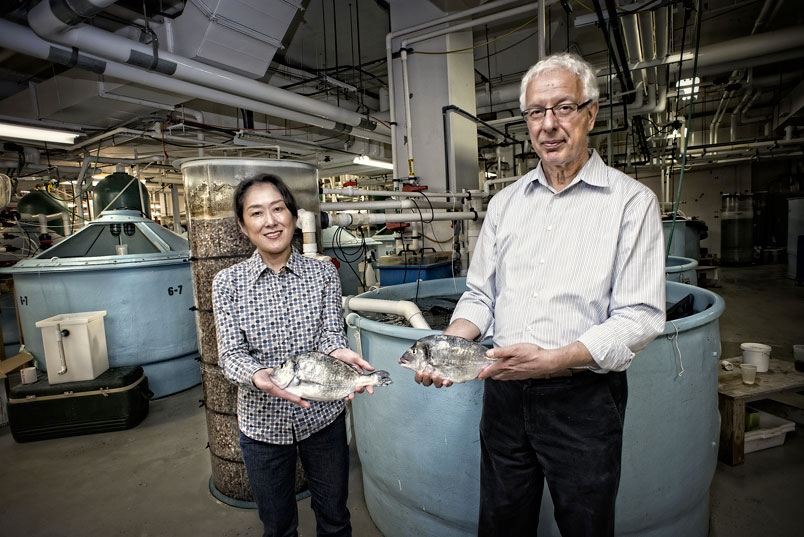
Indoor fish farming in closed recirculating systems offers many advantages to conventional outdoor ponds, raceways, and floating net pens. They are non-polluting, pose fewer user conflicts in nearshore areas and, because they use artificial sea water, can be located almost anywhere, including in warehouses in economically disadvantaged inner-city areas. Additionally, these operations can provide fresh fish to markets the day fish are harvested.
Researchers at the Department of Marine Biotechnology, University System of Maryland, patented a method for growing orata, or gilthead sea bream (Sparus aurata), a Mediterranean fish—the first time a marine fish of such high value had been reared in a completely closed indoor system. This research breakthrough provides solutions to many of marine aquaculture’s current shortfalls. With no impact on the environment, it is ecologically sustainable, and it produces clean and healthy fish that are not exposed to environmental pollutants or pathogens.
In addition, it creates many potential commercial advantages, such as much faster growth, and being able to provide fish to markets the day of harvest.
These systems have the flexibility, like a greenhouse, to grow other high-value species such as European sea bass (branzini) and Atlantic salmon in response to market demand and ongoing research.
University researchers are also developing a scalable and marketable technology to convert fish waste from these systems into methane gas by microbial degradation. This treatment allows the system to support high-density, bio-secure aquaculture with virtually no water exchange, which conserves water, eliminates effluents or escapees and ensures no interaction with the environment. The methane can be an energy source for aquaculture facilities or sold to electric companies.
Clients: Department of Marine Biotechnology, University of Maryland Baltimore County, the Abell Foundation and Maryland Sustainable Mariculture, LLC and Maryland Technology Development Corporation (TEDCO).
TerrAqua’s role: Help commercialize these technologies. Study the marketing potential and develop a business plans.